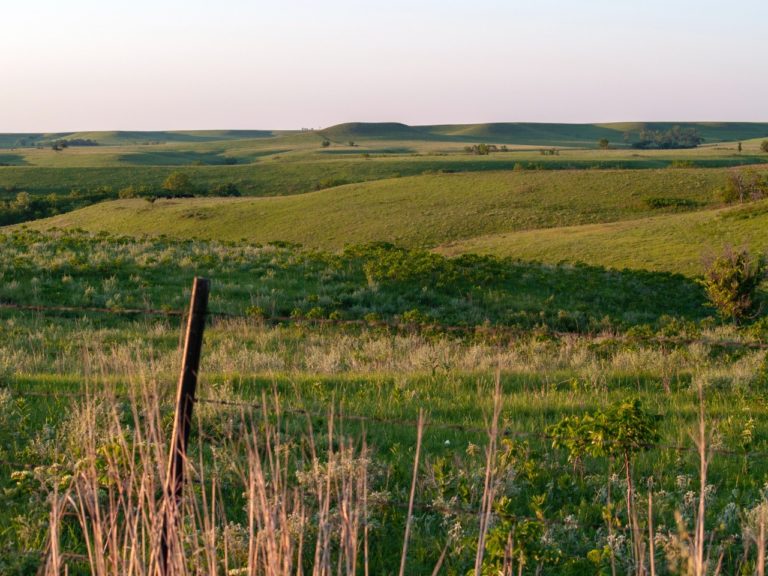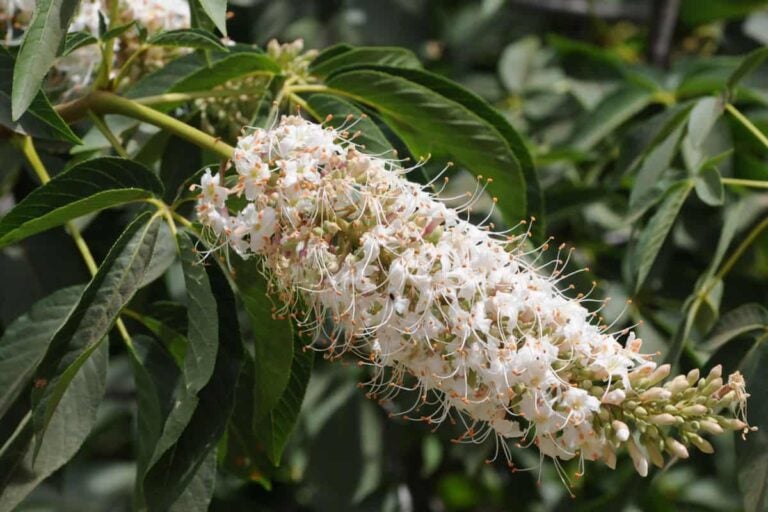Nut Grass: Uncovering Effective Control Methods
Nutgrass, scientifically known as Cyperus rotundus, is a perennial, invasive weed that can be quite challenging to manage in gardens and lawns. Native to Africa, southern and central Europe, and southern Asia, this persistent weed is known for its rapid growth and ability to spread through its extensive root system. Recognized by its shiny, grass-like leaves and triangular stems, nutgrass can quickly become a nuisance for gardeners and homeowners alike.

Effective control and management of nutgrass require a combination of mechanical, chemical, and cultural practices. Manual removal by digging out the plant, including its extensive root system, can provide some level of control, but it can be labor-intensive and time-consuming. In addition to mechanical control, using selective herbicides like Ortho® Nutsedge Killer can help to kill the weed, without damaging desirable lawn grasses.
Regular lawn maintenance practices such as mowing at the highest setting, ensuring optimal soil moisture, and overseeding with desirable grass species can discourage the growth of nutgrass. Furthermore, monitoring new soil or plant introductions can prevent the transfer of nutsedge tubers, hindering its spread. In difficult cases, seeking the assistance of a local lawn professional might be necessary for successful nutgrass eradication.
Table of Contents
Identification of Nut Grass
Nut grass, also known as nutsedge, is a common weed that invades lawns and gardens. It belongs to the sedge family and can be challenging to control due to its aggressive growth and extensive root system consisting of tubers, rhizomes, and nutlets. There are two main varieties of nut grass or nutsedge: yellow nutsedge and purple nutsedge. In this section, we will discuss the identifying characteristics of both types.
Characteristics of Yellow Nutsedge
Yellow nutsedge (Cyperus esculentus) is a perennial weed that resembles grass. Its leaves are long, smooth, and shiny with a yellowish-green color. They emerge from a triangular stem that creates a V-shaped arrangement, easily distinguishable from grass. Yellow nutsedge produces small, yellow-green flowers on the tips of its stems, usually appearing during the summer months.
Some features of yellow nutsedge include:
- Triangular stems
- Yellow-green flowers
- V-shaped leaf arrangement
The root system of yellow nutsedge consists of tubers, rhizomes, and nutlets, which enable rapid growth and reproduction. Tubers are produced at the end of the rhizomes, allowing new plants to develop even after the original plant has been removed. This characteristic makes yellow nutsedge difficult to eradicate from lawns and gardens.
Characteristics of Purple Nutsedge
Purple nutsedge (Cyperus rotundus) has some similarities to yellow nutsedge but exhibits a few differences. Its long, grass-like leaves are also shiny and smooth but tend to have a darker green color. Like yellow nutsedge, purple nutsedge has a triangular stem that distinguishes it from grass. The dark red or purple flowers appear at the end of the stems, usually during the late summer or early fall months.
Characteristics of purple nutsedge include:
- Triangular stems
- Dark red or purple flowers
- Dark green leaves
Purple nutsedge shares the same aggressive root system as yellow nutsedge, with tubers, rhizomes, and nutlets allowing for quick growth and reproduction. These persistent and hardy features make both types of nutsedge difficult to control, making early identification and prompt action crucial for maintaining healthy lawns and gardens.
Natural Habitats and Growth Patterns
Regions Where Nut Grass is Common
Nut grass, also known as nutsedge, is a perennial plant that can be found in various regions across the globe. This weed is native to Africa, Europe, and Asia, and it has become an invasive species in North America as well. Due to its adaptability, nut grass can thrive in a variety of ecosystems such as grasslands, lawns, and areas with poor drainage.
Preferred Soil Conditions and Moisture
Nut grass is a hardy plant with a strong preference for moist soil conditions. If the lawn or garden is consistently damp due to inadequate drainage, it becomes a suitable habitat for nut grass growth. While it is a resilient weed with the ability to tolerate both wet and dry conditions, it will grow much more profusely in moist environments.
A defining characteristic of nut grass is its extensive network of roots and underground stems, known as rhizomes, which contribute to its rapid growth and invasive nature. These rhizomes produce small tubers, which later grow into more nut grass plants. The weed’s adaptability also extends to its ability to flourish in a range of soil types, from sandy to clay soils.
In addition to its preference for damp soil conditions, nut grass can thrive in a varying range of latitudes. This means it can be found from the tropical regions of Africa to the temperate areas of Europe and Asia. Its ability to withstand both high and low temperatures adds to its versatility and makes it a challenging weed to control in a variety of climates.
It is during spring and summer that nut grass is most active in terms of growth. When the weather gets warmer and moisture levels in the soil are optimal, it becomes an ideal time for the plant to proliferate. This makes these seasons critical for homeowners and garden enthusiasts to be vigilant of nut grass infestations and take appropriate measures to control the weed in their lawns or gardens.
How to Control Nut Grass
Nut grass, also known as nutsedge, is a persistent and invasive weed that can be difficult to control in lawns and gardens. To effectively manage it, various approaches can be employed. This section will discuss cultural practices, chemical control methods, and organic control methods.
Cultural Practices
One of the main ways to prevent and control nut grass is through proper lawn and garden maintenance. Regularly mowing your lawn at the correct height is essential; in most cases, it’s best to use one of the two highest settings on your mower. This allows the turf grass to crowd out nutsedge and other weeds, while mowing short may stimulate nutsedge growth. Additionally, regular feeding and proper irrigation of your lawn can help maintain healthy turf grass, limiting the opportunity for nut grass infestations.
Chemical Control Methods
For those looking for a more aggressive approach, chemical herbicides can be effective in controlling nut grass. An option is to use Ortho® Nutsedge Killer Ready-To-Spray, which works against both newly emerged and established sedges. The weed will start to yellow within 1-2 days, and complete kill occurs in 2-3 weeks. This solution can be used on Northern and Southern turf grasses and is rainproof in 2 hours.
Organic Control Methods
If you prefer organic alternatives to chemical control, several options can help control nut grass. Manual removal, digging, and solarization are environmentally friendly methods that can be time-consuming but effective. One homemade remedy involves a mixture of 1 gallon of water and 1 tsp of liquid dish soap. Ensure that you have a few rain-free days before spraying the solution; coat every inch of the plant for the best results.
Remember that nut grass can be challenging to eradicate entirely, but combining these prevention and control methods can help keep it in check and maintain a healthy, beautiful lawn.
Nut Grass in Traditional Medicine and Nutrition
Traditional Chinese Medicine Uses
In Traditional Chinese Medicine (TCM), nut grass (Cyperus rotundus) is valued for its wide range of medicinal uses. It is commonly prescribed to treat various ailments, such as digestive issues, high blood pressure, and fever, due to its potent antioxidant properties and antimicrobial abilities. Furthermore, the herb has been used to alleviate seizures or convulsions, address skin concerns, and promote weight loss.
Ayurvedic Medicine Uses
Similarly, in Ayurvedic medicine, nut grass is hailed for its therapeutic properties. The aromatic tuber of the perennial herb is acknowledged for its role in treating numerous health concerns. For instance, it has been used in Ayurvedic medicine to remedy problems related to the digestive system, support skin health, and manage fever and inflammations.
Nutritional Benefits
Beyond its medicinal applications, nut grass also holds substantial nutritional value. In fact, its tubers have been consumed as food in famine-stricken areas. A comprehensive study on the herb indicated that it contains valuable nutrients and minerals, as well as secondary metabolites and flavonoids. These natural compounds contribute to the overall nutritional profile of the grass and offer additional health benefits.
In summary, nut grass represents a vital and versatile component of traditional medicine. Both TCM and Ayurveda acknowledge the herb’s potential to manage various health conditions and improve holistic well-being. Moreover, its nutritional benefits suggest that it also serves as a viable food source, especially in times of scarcity.
Common Challenges and Solutions
Contamination of the Lawn
Nut grass, also known as nutsedge, is a perennial weed that can be a difficult lawn weed to control. It is a grass-like weed that often appears in patches. When left unchecked, nut grass can quickly spread and contaminate a healthy lawn. One of the main challenges with nut grass is its ability to reproduce through seeding and its underground tubers, which can give rise to new plants.
To protect your lawn from nut grass contamination, consider the following strategies:
- Manual removal: Gently pry the nut grass out of the ground, making sure to remove as many roots and tubers as possible to prevent regrowth. Wearing gardening gloves can help protect your hands during the process.
- Weed control: Apply a post-emergent herbicide specifically designed for nutsedge. This can effectively kill the weed without harming surrounding grass.
- Mowing habits: Avoid mowing your lawn too short, as this can stimulate nutsedge growth. Instead, maintain a taller grass height to help block sunlight from reaching the nut grass.
Toxicity of Nut Grass
Although not commonly known, nut grass can be considered toxic in some cases. The plant contains certain compounds that may be harmful if ingested by humans or animals. However, the risk of poisoning is typically low, as the toxic compounds are only present in minimal amounts.
To minimize potential harm from nut grass toxicity, follow these guidelines:
- Lawn care: Implement regular lawn care practices to maintain a healthy, dense lawn and prevent nut grass infiltration.
- Monitor pets and children: Supervise pets and children while they are in the yard to prevent them from ingesting nut grass or any other potentially poisonous plants.
- Heat treatment: Solarizing the soil by covering the area with a plastic sheet and allowing the sun’s heat to penetrate can help kill nutsedge and other toxic weeds.
By addressing these common challenges, you can keep your lawn healthy and minimize the impact of nut grass on your landscape.
Tools and Techniques for Nut Grass Removal
Nut grass, also known as nut sedge, is an invasive plant that can be difficult to manage. This perennial plant comes in various species such as purple nut sedge, red nut sedge, coco grass, and java grass. Its inflorescence and achene make it a tough competitor for turfgrass. To effectively eliminate nut grass, proper drainage and weed control are essential. This section will discuss two main methods of nut grass removal: Mechanical Removal and Applying Herbicides.
Mechanical Removal
Mechanical removal involves physically digging out the nut grass using tools like a trowel or shovel. This method is effective for small infestations, as it targets the root system, minimizing the chances of the plant returning. To properly remove nut grass:
- Identify: Locate the nut grass infestation, paying special attention to areas with poor drainage.
- Dig: Insert the base of the trowel or shovel and dig down approximately 12-18 inches, as the grass is known to have a deep root system. Ensure that you are gentle while digging to reduce root breakage.
- Extract: Carefully pry the nut grass, roots and all, out of the ground.
- Root Inspection: Remove any remaining roots, as they can cause the nut grass to grow back.
- Monitor: Regularly check the extraction area to detect and remove any new growth.
Proper drainage is crucial for keeping nut grass at bay. Make sure to maintain your garden by using a garden hose to help with the movement of water throughout the soil.
Applying Herbicides
Herbicides can be an effective way of controlling nut grass. These chemicals specifically target and kill the invasive plant without causing harm to the surrounding turfgrass. Some popular herbicides for nut grass control include:
- Ortho® Nutsedge Killer Ready-To-Spray
- Glyphosate (Roundup)
- Triclopyr
- Dichlobenil
To apply herbicides, follow these steps:
- Determine the Type of Nut Grass: Knowing the species of nut grass will help you choose the most suitable herbicide.
- Select the Appropriate Herbicide: Opt for an herbicide that targets the specific species of nut grass you are dealing with and is suitable for the turfgrass in your lawn.
- Follow the Instructions: Carefully read and adhere to the instructions on the herbicide label. This may include using a specific concentration, application method, or time of day to apply the herbicide.
- Monitor: Continuously observe the treated area to ensure the nut grass is dying and not regrowing.
It’s important to note that the use of herbicides should be done with care, as improper usage can cause harm to the environment and other plants. Always follow the label instructions and seek professional advice if unsure of how to apply the herbicide correctly. If you’re looking to find other lawn care tips, be sure to check out this page.




![Best String Trimmer Reviews of [year]](https://properlyrooted.com/wp-content/uploads/2022/10/best-string-trimmer-reviews.png)